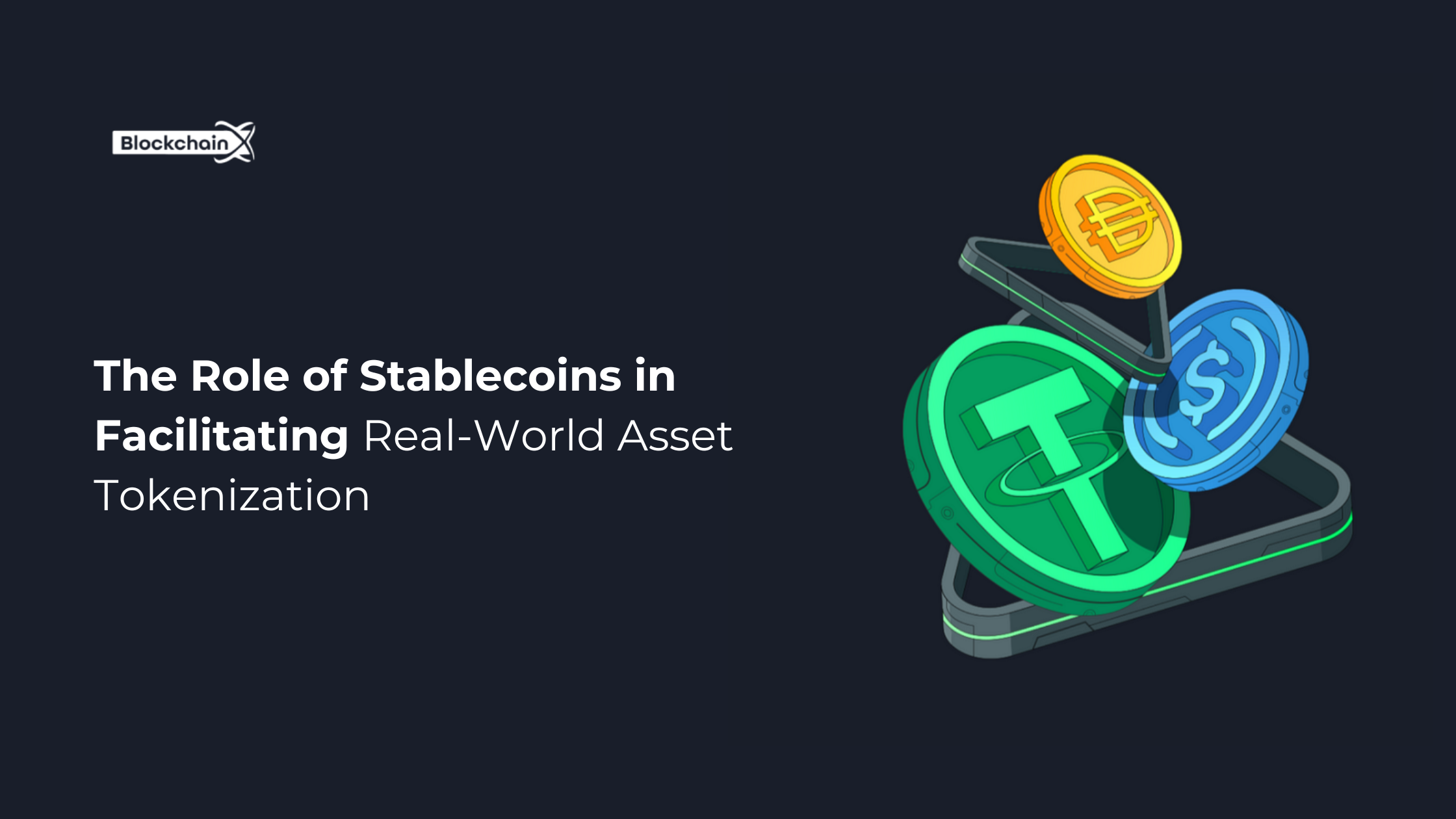The Role of Stablecoins in Facilitating Real-World Asset Tokenization
 Rose Mason
Rose Mason
Introduction
The financial landscape is undergoing a dynamic change, with blockchain technology at its center. One of the most important ways in which blockchain is being applied to free tangible assets such as real estate, commodities, equities, and even fine art into digital tokens on the blockchain is through the process of tokenization of real-world assets (RWAs). Yet, there exist tremendous amounts of potential and obstacles that need to be tackled: price volatility, liquidity, and uncertainty concerning regulations.Stablecoins are then introduced as being the bridge between conventional finance and decentralized asset ownership, pledging stability and efficiency for seamless tokenization.
Understanding the Role of Stablecoins in RWA Tokenization
Stablecoins are understood as digital assets with a stable value; thus, the name itself. Usually pegged to a fiat currency such as the US dollar, they may also be underpinned by assets such as gold or real estate. In contrast to the volatile coins, like Bitcoin or Ethereum, stablecoins permit a more predictable way of transacting and thus could be apt for tokenization of RWA.
With stablecoins in the mix with RWA tokenization, it provides near-instant, low-cost transactions where such fluctuations may impede institutional adoption. The use of stablecoins by way of pricing, purchasing, selling, and trading tokenized assets gives confidence to market participants to transact smoothly without any fear of rapid devaluation.
Enhancing Liquidity and Accessibility
The liquidity, considered one of the most serious obstacles in the traditional asset market. Real estate dealings, for example, are often slow, cumbersome, and quite expensive in terms of capital commitments, with a lot of intermediaries and legal paperwork involved in them. By creating tokens representing real estate and allowing them to be bought and sold by stablecoins, fractional ownership becomes more widely available so that a larger number of investors can get into markets that were almost exclusively for high-net-worth individuals and institutions.
Utilize our Real World Asset Tokenization services for secure and scalable asset management
By liquefying tokenized bullion, commodities, and securities, stablecoins serve as a standardized and internationally accepted medium of exchange. This applies mostly in those markets where fiat transactions become awkward, slow, or geographically restricted. So, stablecoins take away the friction in cross-border payments, allowing international investors to take part in RWA markets without going through the currency conversion or the lengthy banking processes.
Institutional Adoption and the Role of Stablecoins
Stablecoins are gradually being recognized by even institutional and traditional financing entities as they are valuable for RWA tokenization. Leading banks and fintechs continue to explore the efficiency gains that can be realized from settling tokenized securities, streamlining bond issuance, and enabling real-time settlements using stablecoins. Like the JPM Coin from JPMorgan and the MakerDAO's DAI-backed tokenized assets, these innovations bring efficiency and security advantages for asset transactions.
They are also interfacing directly with DeFi protocols, allowing the lending, borrowing, and staking of tokenized real-world assets using stablecoins. This concept will open enormous innovation windows, allowing asset owners to unlock liquidity doorways while allowing investors to run passive income channels with a trustless and transparent view.
Regulatory Challenges and Future Outlook
There are still various hurdles i.e. regulatory ones that persist for stablecoins and real-world asset tokenization. Governments and financial regulators are still busy figuring out how to classify and supervise these so-called private stablecoins. The introduction of central bank digital currencies (CBDCs) adds to this dilemma, as they may compete or intervene against the private sector's stablecoins in RWA transactions.
Nevertheless, the growth of stablecoins will be encouraged by increased clarity in their own regulatory framework for the tokenization of real assets. Innovations like cross-chain interoperability, AI-governed compliance mechanisms, and programmable smart contracts will create additional avenues for utilizing stablecoins in real-asset tokenization in a seamless and secure manner.
Conclusion
Stablecoins are called so because they are meant to be at par with a given value; for example, the US dollar or other fiat currencies or assets like the gold or real-estate, and so on. Unlike volatile coins such as Bitcoin or Ethereum, these coins permit transacting in a predictable way, making them very appropriate in RWA tokenization processes.
Subscribe to my newsletter
Read articles from Rose Mason directly inside your inbox. Subscribe to the newsletter, and don't miss out.
Written by

Rose Mason
Rose Mason
I am a rosemason with a deep expertise in blockchain technology. I am a seasoned consultant who specializes in helping businesses and organizations harness the power of decentralized systems. My experience spans across various blockchain platforms, focusing on developing and implementing innovative solutions such as tokenization, smart contracts, and decentralized applications (dApps). Known for his strategic insight and technical knowledge, and am dedicated to guiding clients through the complexities of blockchain, ensuring seamless integration and unlocking new growth opportunities in this rapidly evolving space.